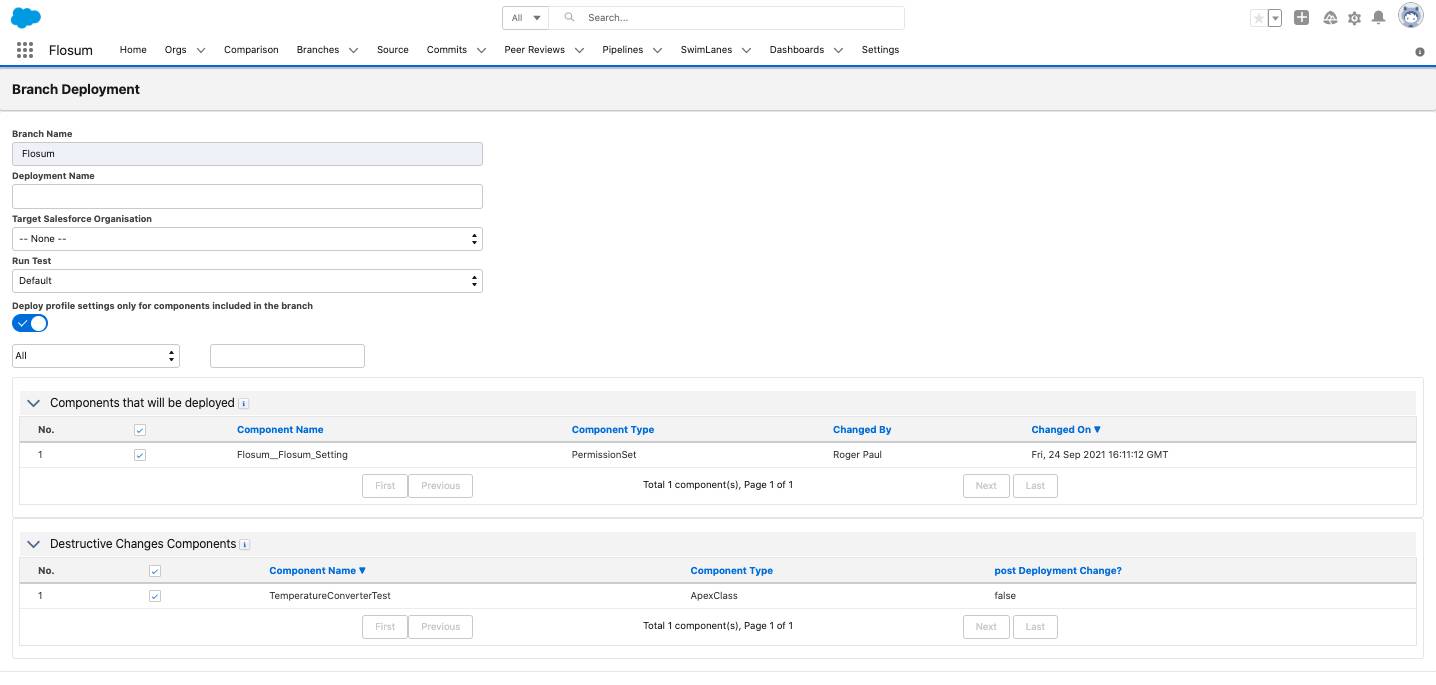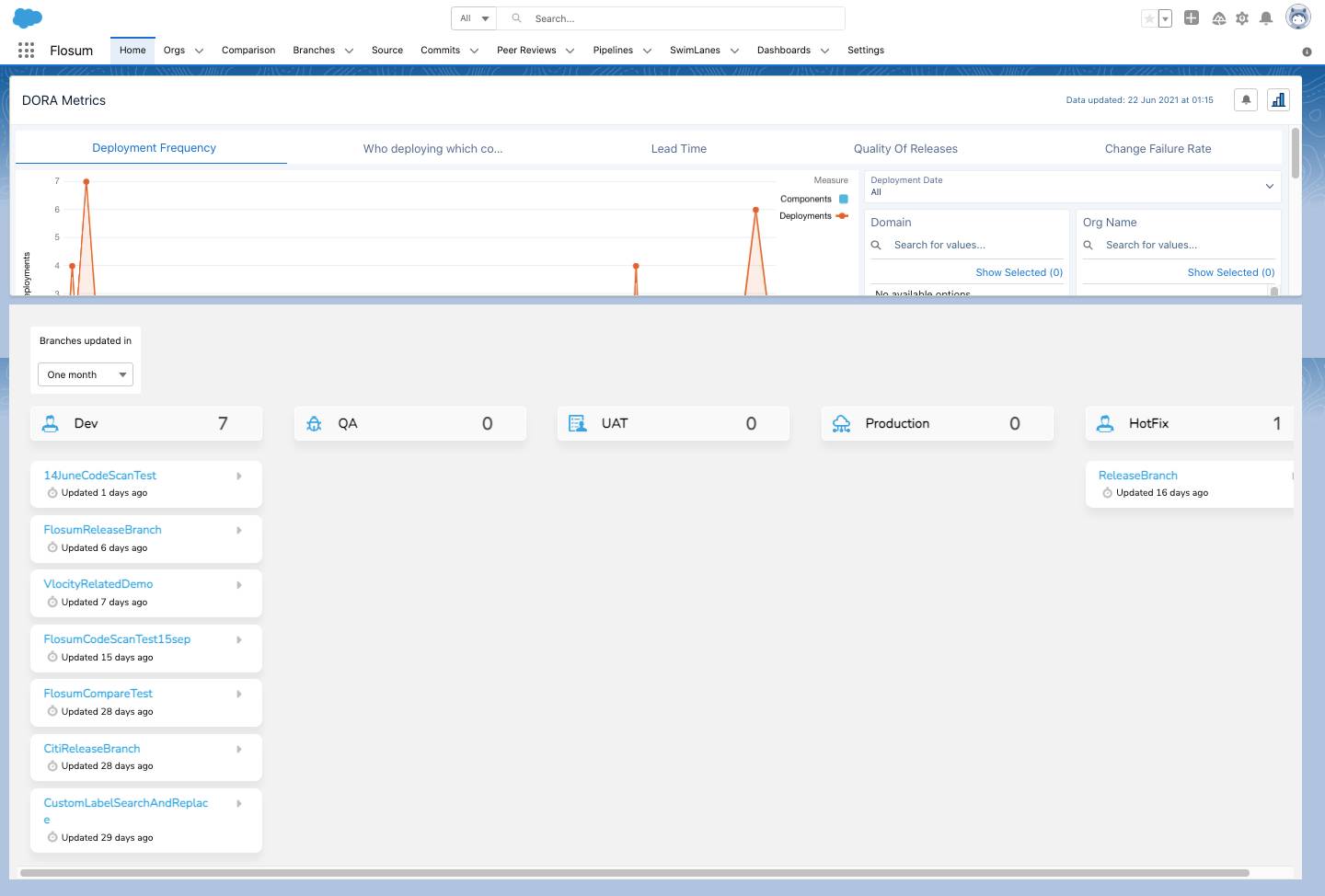Deploy a Release Branch to Production
Learning Objectives
After completing this unit, you’ll be able to:
- Describe deploying a release branch.
- Identify how pipelines automate development processes.
- Summarize how users track and manage the dev process with the Kanban board and SwimLanes.
Deploying a Release Branch
All deployments are done from the branch records within Flosum. A user can deploy a release branch in one of two ways:
-
Manually: Users execute a standard deployment where they select the org and push the components out to the org.
-
Via Pipelines: Users configure the steps ahead of time and execute them automatically. (We will discuss more about this later.)
When a user attempts to execute a deployment, it shows the deployment history at the top of the Deploy tab.

There, users can see:
- The deployment name.
- The changes that have been made.
- Destructive changes (the removal of components from an org).
Users also can view the metadata logs of deployment, including:
- How many components were successfully deployed.
- Which components passed.
- Which components failed.
Under other tabs within Deploy, users can see the following information and more:
- Which Jira stories were deployed (Jira)
- Who approved them (Approval History)
- Which components were changed (Manifest)
Using Pipelines
A pipeline allows a user to define and automate the exact series of steps they want executed in the development process.
Users can automate four different actions:
- Validations
- Deployments
- Rollbacks
- Webhook calls
Pipelines perform these actions in a series of steps, and include dependent steps based on whether the preceding action has passed or failed. Pipelines also let users select the tests they want to run (for example, specified tests, included tests, or all test options).
Let’s look at an example. Suppose a user has a feature branch that has been approved and is going to use a pipeline to deploy into the integrated development environment (IDE). If the validation is successful, it will deploy to the QA org. If the deployment is successful, it will complete the regression testing on the QA org. If the regression testing is successful, it will take that particular branch and promote it to the production org. If a deployment fails at any point along the way, it does not proceed to the next step.
Tracking and Managing the Development Process
The Kanban board on the Flosum Home tab shows where each user story sits in the development process in real time.

Users can see how many components are in a branch, how many errors were found, and other details. Users also can select any time frame in the Branches Updated drop-down menu to view changes within that time frame.
The SwimLanes tab lets users configure the order or their operations and processes.
Flosum helps teams easily manage their DevSecOps lifecycle and Salesforce deployments from beginning to end. The result is high-quality, continuous releases that keep pace with the demands of the market without sacrificing the security of valuable customer data.
Resources
- Webpage: Flosum: Flosum Certified Learning
- Video: YouTube: Create a Pipeline in Flosum
- Video: YouTube: Set Up a Kanban Board in Flosum
